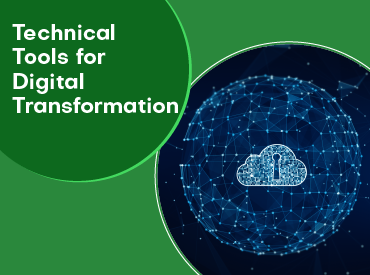Developing the Operational Business Model for the Data Management Office
Establishment and Operation of Data Management Office (DMO)
Developing the Operational Business Model for the Data Management Office

In the face of rapid and significant changes and the constant state of uncertainty that accompanies today’s business environment, organizations have recognized the need to establish a Data Management Office (DMO). This office is responsible for facilitating and coordinating data efforts, overseeing the design, development, and updating of relevant strategic plans. To achieve this, it is crucial to develop the operational business model for the Data Management Office.
What is the Operational Model for Data Management Office?
It is an operational plan that encompasses a set of roles, responsibilities, procedures, and interconnected services designed to practically manage the operations of a Data Management Office (DMO). The model aims to meet the strategic goals of data management within any organization. To design a robust operational model, it should include the following elements:
- Identify the tasks and responsibilities of the office and its staff.
- Define performance indicators for the office and metrics that measure data quality.
- Outline job descriptions for the roles within the data office.
- Identify the required capabilities for roles within the data office.
- Design an interaction and communication model for the Data Management Office (internally and externally), including a description and mechanism for interacting with external parties and internal departments.
- Specify the tasks, responsibilities, and formation of oversight or operational committees related to the office's work.
- Establish a response and compliance system for nationally adopted controls, including procedures and a compliance mechanism and authority matrix.


Need assistance/consultation?
Contact us now; our entire team (+110 consultants and experts) will work together to answer all your inquiries.
What is the Purpose of Developing the Operational Model for the Data Management Office?
The operational model aims to provide a practical framework for managing the operations of a Data Management Office (DMO), supported by an organizational structure that aligns with the entity’s business requirements. It includes performance indicators and ready-to-use models for utilization within the Data Management Office. The model comprises a core set of components (organizational structure, roles and responsibilities, operational performance indicators, procedures, capabilities, and governance and compliance model).
Why is it Important to Prepare the Operational Model for the Data Management Office?
The operational model for the Data Management Office serves as a tool for building and developing an efficient and effective data management office, supported by a clear plan for the future. It guides the office’s activities based on global best practices in both data management and personal data protection.
It ensures alignment with national data management plans, compliance with regulations and specifications, and adherence to policies. The model also facilitates continuous development of plans and procedures related to data management, monitors compliance, and enhances capabilities to elevate the maturity level in data management and personal data protection. It includes:
- Coordinating data-related efforts and implementing data-related initiatives.
- Evaluating readiness and challenges in data management and personal data protection.
- Raising awareness among staff about data management roles and responsibilities.
- Contributing to the development of a comprehensive data guide.
- Assisting the entity in leveraging data for effective utilization, aligning with the national plans and initiatives efficiently.
Our services in developing the operational model for the Data Management Office:
At Renad Al-Majd for Information Technology and Consulting (RMG), we recognize the crucial importance of developing the Data Management Office and aligning related operations within the entity. Therefore, we offer a comprehensive service package to assist you in developing the operational model for the Data Management Office. This includes:
- Defining operational goals.
- Identifying the required capabilities for the Data Office roles.
- Defining tasks and responsibilities for the office and its staff.
- Identifying performance indicators for the office and operational indicators.
- Crafting job descriptions for Data Office roles.
- Designing the interaction and communication model for the Data Management Office (internally and externally). This involves describing the mechanism for interacting with external entities and internal departments.
- Defining tasks, responsibilities, and the formation of relevant supervisory and operational committees related to the office’s work.
- Preparing a response system and compliance with adopted national controls, including procedures, compliance mechanisms, and the authority matrix.


Need assistance/consultation?
Contact us now; our entire team (+110 consultants and experts) will work together to answer all your inquiries.


















